Volume 22, Issue 2
Displaying 1-7 of 7 articles from this issue
- |<
- <
- 1
- >
- >|
Special Topics: Electroconvulsive Therapy in General Hospital Psychiatric Units and Community Cooperation
Original Article
-
2010Volume 22Issue 2 Pages 105-118
Published: April 15, 2010
Released on J-STAGE: June 10, 2014
Download PDF (671K)
Appendix
-
2010Volume 22Issue 2 Pages 119-124
Published: April 15, 2010
Released on J-STAGE: June 10, 2014
Download PDF (373K)
Overview
-
2010Volume 22Issue 2 Pages 125-131
Published: April 15, 2010
Released on J-STAGE: June 10, 2014
Download PDF (455K)
Original Article
-
2010Volume 22Issue 2 Pages 132-136
Published: April 15, 2010
Released on J-STAGE: June 10, 2014
Download PDF (441K)
Overview
-
2010Volume 22Issue 2 Pages 137-141
Published: April 15, 2010
Released on J-STAGE: June 10, 2014
Download PDF (574K)
Contribution
Original Article
-
2010Volume 22Issue 2 Pages 142-152
Published: April 15, 2010
Released on J-STAGE: June 10, 2014
Download PDF (620K)
Original Article
-
2010Volume 22Issue 2 Pages 153-161
Published: April 15, 2010
Released on J-STAGE: June 10, 2014
Download PDF (1283K)
- |<
- <
- 1
- >
- >|
